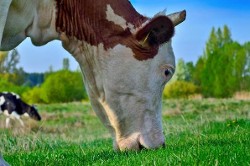30 September 2015
Woodrow Wilson Center, Washington, DC
Brian Walsh: Can Algae Impact Climate Change?
Brian Walsh discusses his new paper, New Feed Sources Key to Ambitious Climate Targets, at the event "Can Algae Impact Climate Change?" which finds replacing microalgae as animal feed could free up significant land currently used for pasture and feed crops, while meeting 50 percent of our annual energy needs and potentially reducing global atmospheric carbon concentrations to preindustrial levels by the end of the century.
After a presentation by Walsh, a panel of experts will discuss the technical realities of the research, land-use and animal feed stock issues and whether algae can really impact global climate change.
Panelists
- David Babson, Senior Engineer, Union of Concerned Scientists
- Jennifer Turner, Director, China Environment Forum and Manager, Global Choke Point Initiative, Woodrow Wilson Center
- Jill Kauffman Johnson, Global Sustainability Director, Solazyme, Inc.
Moderated by
David Rejeski, Director, Science & Technology Innovation Program, Woodrow Wilson Center
Abstract
Net carbon sinks capable of avoiding dangerous perturbation of the climate system and preventing ocean acidification have been identified, but they are likely to be limited by resource constraints.
Land scarcity already creates tension between food security and bioenergy production, and this competition is likely to intensify as populations and the effects of climate change expand. Despite research into microalgae as a next-generation energy source, the land-sparing consequences of alternative sources of livestock feed have been overlooked. Here we use the FeliX model to show that microalgae as feedstock can free nearly 2 billion hectares of land currently used for pasture and feed crops. Short rotation biomass plantations established on these areas are capable of meeting over 50% of annual primary energy demand, resulting in emissions mitigation from the energy and LULUC sectors totaling 455 ± 126 PgC by 2100.
Further emissions reductions from carbon-sequestering technologies can reduce global atmospheric carbon concentrations close to preindustrial levels by the end of the present century. Though previously thought unattainable, carbon sinks and climate change mitigation of this magnitude are well within the bounds of technological feasibility.
NEWS
"Climate Modernity" - The 24H Challenge: How do we want to live and act in the future in Styria ?
Health fears can increase pandemic isolation habits in older Europeans
How circular waste management systems can benefit the environment
Launch of the Northern African Applied Systems Analysis Centre
How we measure the effects of methane matters for climate policy



